Marine Microbe Contains Multitudes
A deep dive into microbial genomics reveals one bacterial species is made of four ecologically distinct groups with different lifestyles. [Read More]
 A deep dive into microbial genomics reveals one bacterial species is made of four ecologically distinct groups with different lifestyles. [Read More]
A deep dive into microbial genomics reveals one bacterial species is made of four ecologically distinct groups with different lifestyles. [Read More]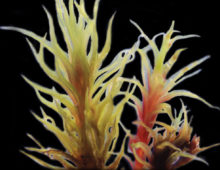 High-quality reference genome sequences of the male and female fire moss plants are now available, and lessons from their sex chromosomes could help improve crop yields. [Read More]
High-quality reference genome sequences of the male and female fire moss plants are now available, and lessons from their sex chromosomes could help improve crop yields. [Read More]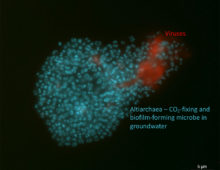 Researchers describe how viruses repeatedly attempt to infect and destroy their hosts – and how the microbes resist. [Read More]
Researchers describe how viruses repeatedly attempt to infect and destroy their hosts – and how the microbes resist. [Read More] A study suggests climate change is behind a trend that could destabilize the delicate marine food web. [Read More]
A study suggests climate change is behind a trend that could destabilize the delicate marine food web. [Read More] Researchers describe a two-pronged approach that starts with engineered yeast cells but then moves out of the cell structure into a cell-free system. [Read More]
Researchers describe a two-pronged approach that starts with engineered yeast cells but then moves out of the cell structure into a cell-free system. [Read More]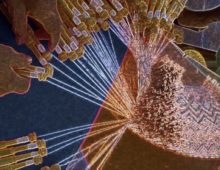 A special issue of Synthetic Biology celebrates research enabled by the JGI DNA Synthesis Science Program. [Read More]
A special issue of Synthetic Biology celebrates research enabled by the JGI DNA Synthesis Science Program. [Read More]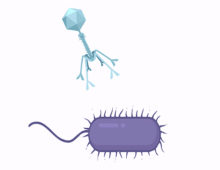 A genetic element that enables rapid, targeted mutation is surprisingly widespread and appears to allow viruses to hunt new microbial prey. [Read More]
A genetic element that enables rapid, targeted mutation is surprisingly widespread and appears to allow viruses to hunt new microbial prey. [Read More]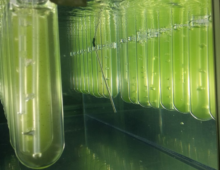 A collaborative approach highlights how a screening and characterization pipeline could help accelerate algae biotechnology research efforts. [Read More]
A collaborative approach highlights how a screening and characterization pipeline could help accelerate algae biotechnology research efforts. [Read More]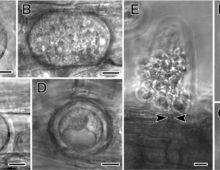 In this guest blog: a behind-the-paper look at the fungus Olpidium, a link in the evolution and transition of fungi from aquatic to terrestrial habitats. [Read More]
In this guest blog: a behind-the-paper look at the fungus Olpidium, a link in the evolution and transition of fungi from aquatic to terrestrial habitats. [Read More] While thousands of species of fungi and bacteria dwell on — and within — the forest floor, who’s recycling the plant biomass? [Read More]
While thousands of species of fungi and bacteria dwell on — and within — the forest floor, who’s recycling the plant biomass? [Read More]